The Ultimate Guide On How To Get An Australian Visa Or Australian Citizenship For Filipinos From The Philippines
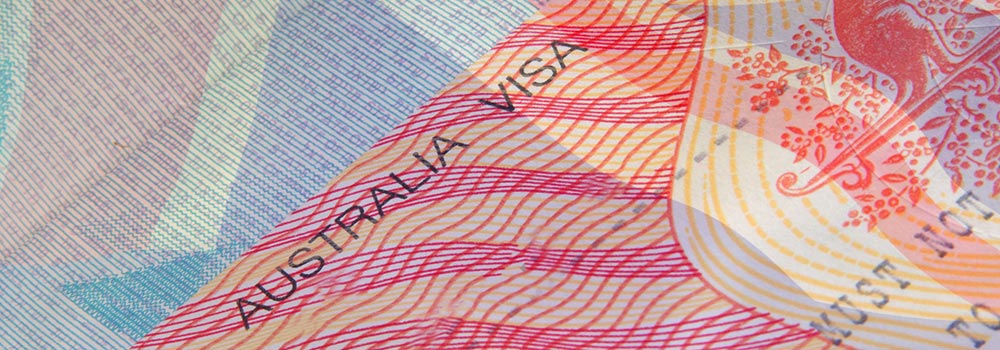
If you are on this website, then one of the following two situations is true. Either you are Australian and want to bring your Filipina / Filipino home with you or you are a Filipina / Filipino and want to join your Aussie (romantic) partner in Australia. If this is your situation, then you are in luck. You’ve landed in exactly the right place.
For starters, any visa process can be a daunting experience. We doubt anyone would disagree with that. So, let’s see if we can make this pill a little easier to swallow.
We are going to start out by talking about the different types of visas available.
Six main types of visas
There are six main types of visas we will look at: Partner Visas, Tourist Visas, Parent Visas, Child Visas, Bridging Visas and De Facto Relationships.
We will also look at how you can become an Australian Citizen and how your children can become an Australian Citizenship By Descent.
The Partner Visa

The Partner Visa is a very common visa type, so we’ll start there. First, let’s get to know the four sub-visas. There is the Prospective Marriage visa, otherwise known as the Fiancée Visa. Onshore Partner Visas, Offshore Partner Visas and the New Zealand Citizen Family Relationship Visas.
Prospective Marriage Visa

The Subclass 300 Prospective Marriage Visa is intended for Australian-Filipino couples who are planning to get married inside of Australia. These are not just for Australian citizens. Permanent residents of Australia and some New Zealand citizens are also eligible for this type of visa.
These visas are good for nine months and you must marry your sweetheart within those nine months.
There is one caveat, however. You must both be legally able to marry. What does this mean? Well, simply put, it means that both of you must not be married. So, you are legally divorced or had a previous marriage annulled or had never been married. In short, your legal status should be SINGLE.
Let’s look at a scenario that is all too common in the Philippines. What if your Filipino partner has been separated for a long time, but the marriage has not been legally divorced or annulled? Well, then he/she is not legally able to marry.
As we all know, divorce is not legal in the Philippines. So, what if a divorce was granted in another country, such as Hong Kong of Japan? Well, according to Jeff Harvie of Down Under Visa, if the divorce is legal in Hong Kong or Japan, then Australia will recognise it, which means that person will be regarded as legally free to get married.
Let’s look at a few other requirements:
Your pinoy / pinay partner must not be in Australia at the time when the visa application is submitted.
And you must apply for the Onshore Partner Visa (Subclass 820) BEFORE the nine month period expires.
As stated above, you both must be ready to marry, in Australia, within the visa period.
A piece of bad news.
Your partner will not be able to apply for Australian Medicare, while on the Fiancé visa. However,
“Once the application for the Subclass 820 temporary onshore partner visa is lodged, you can take the acknowledgment letter to Medicare and she may apply. The bridging visa A comes into effect when the Subclass 300 runs out, however a Medicare application only needs the lodgement to take place.” ~ Jeff Harvie
How about some good news?
Being a progressive country, Australia will also grant these visas to same-sex couples who want to get married inside Australia. This is great news, because prior to this change, same-sex couples were limited to de facto partner visas.
Your fiancée will be granted the ability to work, with no restrictions.
Your fiancée will be allowed to travel in and out of Australia as he / she pleases. In other words, they will be given a multiple entry visa.
Dependent children may also be granted a visa, as a secondary applicant, to your fiancée’s visa.
Once you are married, you will need to apply for a Subclass 820 temporary Onshore Partner Visa (a modified version of the full 820 application). You MUST apply for this visa BEFORE the nine-month fiancé visa expires. Have no fear, though. Your new spouse can stay in Australia on a Bridging Visa while the Subclass 820 Visa is being processed. That means your husband or wife will not have to go back to the Philippines. Isn’t that fantastic?
Onshore Partner Visa
You can also apply for a stand-alone Onshore Partner Visa (ie without a Prospective Marriage Visa), if the two of you apply in Australia. Usually this means the visa applicant is in Australia on a tourist visa, and they usually get married there in Australia on the tourist visa.

It means you must be:
- Married before applying.
- Or in an established de facto relationship generally for 12 months before applying.
It takes time to be processed, but again the visa applicant gets to remain in Australia on a Bridging Visa A during that time. She doesn’t need to leave, and may remain until they make a final decision.
Remember to take your time and gather your materials and information so that you can file a good quality well-prepared application. This visa is not cheap, and you don’t want to get denied because you rushed through it. The other thing to remember is that you must apply for this visa while your partner is still in Australia. If he / she has left the country, then you cannot lodge an Onshore Partner Visa. If your partner has left, to go back home to the Philippines, then you must apply for an Offshore Partner Visa.
This Subclass 820 visa is a two-year temporary visa. After that time, if your application is approved, a permanent visa will be issued. This permanent visa is a Subclass 801 permanent Onshore Partner Visa.
The Benefits of an Onshore Partner Visa
Just like with a Subclass 300 Prospective Marriage Visa, your partner will have full rights to get a job and work. This is great, because it means that he/she can help you pay back any debts that were incurred for the wedding, as well as, be able to contribute financially towards the visa process. Also, like the fiancée visa, your spouse’s children will be eligible for this visa, allowing them to remain in Australia, while awaiting their 801 permanent visa.
Your new spouse will also be able to apply for Medicare. So, any healthcare cover you were paying for can be discontinued, a further savings.
It is not necessary to apply for the Subclass 801 permanent Partner Visa. When you applied for the Subclass 820, you automatically applied for the 801 as well.
It is worth noting that if you are in a de facto relationship you can still apply for this visa. In this scenario, there is no need to be married first.
Offshore Partner Visa
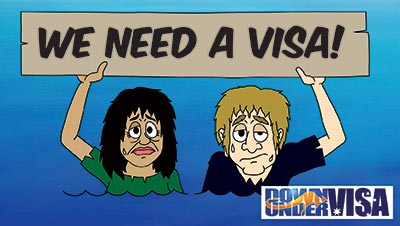
A Subclass 309 temporary offshore Partner Visa is very similar to the Subclass 820 temporary onshore Partner Visa. As a matter of fact, with the exception of location, they are virtually identical.
In short, if your Filipino partner is not in Australia, but is in fact still in the Philippines. This would generally be the case if you are to be married in the Philippines, instead of in Australia.
The application can be lodged before the wedding, but the wedding must take place during the processing time of the visa (unlike the onshore Partner Visa!).
Like the Subclass 820 Visa, the Subclass 309 is also available to those in a de facto relationship. It is also available to those in same-sex marriages or same-sex de facto relationships.
Furthermore, because the Filipino is in the Philippines, this is a much less stressful process because there are no time limits or deadlines to be concerned with.
Additional benefits, similar to the Fiancée Visa and the Subclass 820 Visa, are that this visa allows for multiple-entry, full work rights for your partner and Medicare eligibility (after the application is lodged).
Lastly, as with the Subclass 820 Partner Visa, when you apply for the Subclass 309 Partner Visa, you are automatically applying for the Subclass 100 Permanent Partner Visa.
NZ Citizen Family Relationship Visa
The Subclass 461 NZ Citizen Family Relationship Visa is a five-year visa for the families and/or de facto spouses of citizens of New Zealand who live in Australia, on a Subclass 444 Special Category Visa, and wish to bring their families and spouses to live in Australia with them.
This visa is different from the Subclass 820 / 801 or 309 / 100 Visas in that they all require an Australian Citizen (or an Eligible New Zealand citizen) to sponsor them.
Wait! An “Eligible New Zealand Citizen”? What does that mean?
Well, on January 21st of 2001, Australia changed its immigration laws. Prior to this date, any New Zealander who came to Australia did so on a “visa-free” status. They also were eligible for the Australian social security and Medicare systems. As previously stated, that is no longer the case. Now, any New Zealander who immigrates to Australia does so on a Subclass 444 visa. They are still able to live and work in Australia, but they no longer enjoy the benefits of the variety of social support programs provided by the Australian government to its citizens. However, anyone who came to Australia and settled prior to this date had their visa-free status grandfathered and are considered part of the aforementioned “eligible New Zealand citizen” group. So, they are able to sponsor their Filipino family and/or de facto spouses for a subclass 820 / 801 or 309 / 100 visa.
Unfortunately, there is no fiancée visa option for Subclass 461 visa holders’ Filipino partners (de facto or otherwise), because the applicant must be a family member (which includes a husband or wife) or de facto partner.
Another fact is that there is no path to becoming a permanent Australian resident or citizen for these visa holders.
However, there is some good news.
Subclass 461 visas are valid for five years and can be renewed before they expire without leaving Australia. Furthermore, they will have full rights to work and study in Australia, and they are multiple-entry visas. However, as stated earlier, Medicare is not available to them. As a result, it is required to purchase and maintain private medical insurance for the duration of their Australian stay.
Another reason to cheer is that these visas are much cheaper and simpler to acquire than a full partner visa would be. Also, dependent children can be added on to your partner’s 461 visa application as secondary applicants.
Finally, these visas are available to same-sex couples, providing they are legally married before the application is lodged.
Tourist Visas
The Subclass 600 Temporary Visitor Series of Visas
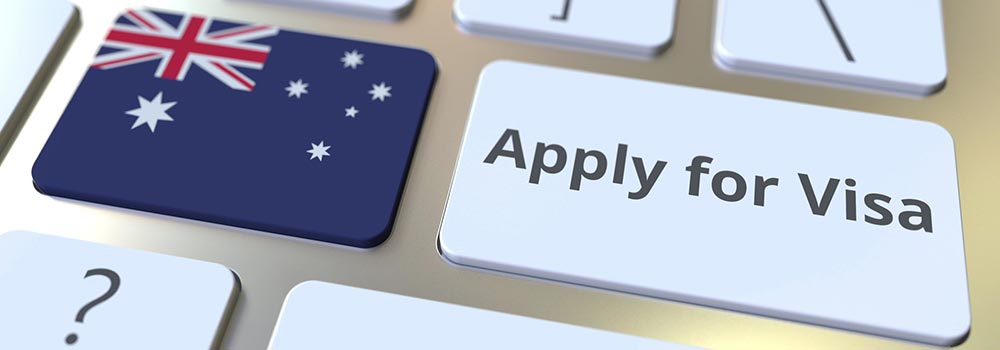
A.k.a. “a tourist visa”, this is another way to bring your sweetheart to Australia.
This is the visa that lets your Filipino lady visit you and stay with you for a while in Australia. Really good if you are not quite ready to take that bold step in getting a partner visa for her. Good for letting the relationship to develop and so you can see what it would be like to live with her in Australia, like a trial-run.
It’s a good bet that you’ve heard otherwise from friends, family, or even travel agents, but this is not the easiest option for a Filipino. To be honest and frank, many people think this visa is simple and easy to get and they can use it to enter Australia, overstay their visa and work illegally. However, the Australian government is well-aware of these little games and so they scrutinise Filipino applications very carefully for that very reason.
A lot of tourist visas from the Philippines get refused! Why? Because they need to be 100% certain that the visa applicant isn’t going to break the rules. Philippines is a poor country, right? And a Filipino could earn more in a day picking fruit than they can in one month in the Philippines.

They need to believe that the applicant only wants to visit Australia and not try to overstay and in particular to work illegally! You need to convince them with a really good application.
That’s not to say that a Filipino has no chance to obtain a tourist visa. If you genuinely want to visit Australia to spend time with your boyfriend / girlfriend / fiancée, then find an honest Australian migration agent to help you apply for your visa.
Earlier, it was mentioned that many people say that the Subclass 600 Tourist Visa is easy and simple. This is simply not true. However, it is less complicated and cheaper than a Partner Visa. Another treat is that a multiple-entry visa may be granted, and you can extend your stay by lodging an application for an Onshore Tourist Visa.
Just remember that it’s a temporary visa. It’s not for staying for years and years and it’s not for avoiding the more expensive partner visa. This is for visiting and then going home again. If that’s what you want right now? Then this is the visa for you. Otherwise if you can’t stand being apart, look at a Partner Visa.
Parent Visas
The Subclass 870 Temporary Parent Visa

This may be granted to mothers and fathers of your Filipino partner.
This is great news because it means your sweetheart will not have to travel back to the Philippines to see his or her mother and father. In addition, because they will be living in Australia and will be unable to work, they can help with childcare or other domestic chores. They will also be able to help your Filipino/Filipina acclimate to life in Australia, because she will have her loved ones with him/her.
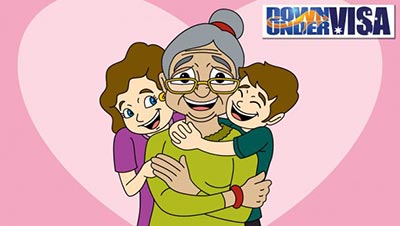
One of the best things about the temporary parent visa is that it means parents can have mum or dad (or both) at home just like how it’s done in the Philippines. No more messing about with child care and dropping kids off at daycare centres.
You can come home to your kids, knowing they’ve been in the safest possible hands. Homework done. Dinner cooked. Great for the kids. Great for grandparents who would otherwise miss their grandkids. Great for your family.
Let’s get down to nitty gritty and check out some specifics about this visa.
If granted a parent visa, Mum and/or Dad will be allowed to remain in Australia for up to three or five years. However, since the visa can be renewed, you can effectively double that time. That is right. It is possible for her parents to live in Australia for a possible maximum of up to ten years.
Costs
Costs are fairly significant, however after you get a costing for your preferred option you should compare this with what you would otherwise spend on childcare expenses over the years. For most people, the advantages are priceless.
Overseas Visitors Health Cover (OVHC)
You will need to provide and maintain healthcare coverage for the Filipino parent whilst inside Australia.
Debts to the Australian Government
You should not have any debts to the Australian government, or otherwise have arrangements (with the Australian government) to pay it off.
Child Visas

There are two types of child visas and they are quite similar, although there is one major difference. The difference being whether or not the parent is on a permanent or temporary visa. Beyond that, everything else is largely similar. First and foremost, in order to apply for either a Dependent Child Visa or a regular Child Visa, the child must be largely dependent on his or her Filipino parent for their daily needs.
Dependency
Right about now you might be wondering how the Australian government defines “daily needs”. Well, it is exactly what you would expect. Clothing, food, shelter, etc.
Now, it is important to remember that you must be able to prove that your child is wholly or substantially dependent on you for their daily needs. Also, take note that, after age 18, the older they are the more difficult this becomes to prove. That isn’t to say that it is impossible. For example, if you have an 18 - 22 year old child who is studying in college full time, that would be a reasonable explanation for why they still depend on you.
However, should your child have a part time job or if there is another parent who provides wholly or substantially for the child, then this may negate the dependency.
What constitutes a “child”?
First, they must be YOUR CHILD either by birth or adoption. So, if your niece has been living with you for the last 10 years, she is not eligible unless if you have adopted her legally and officially.
In addition, you must either have court-ordered sole custody or possess signed and written authorisation from the child’s other parent. So, dad you will have to get mum’s written permission and vice versa. As it is not so uncommon in the Philippines for children to be born “illegitimately”, then Article 176 of Executive Order No. 209 (a.k.a. the Family Code of the Philippines) will come into play.

Paraphrased, this states that in the case of illegitimate children, the mother will automatically retain sole custody of the children until they reach the age of seven years. So, no written permission will be required.
Sponsorship
Whoever sponsored the parent would also have to sponsor the child. So, that means you, Mr. John Sponsor (or Miss Jane Sponsor) Australian.
The Benefits of a Child Visa
For starters, the fees are only moderately high.
Sometimes children are not included in partner visas and remain in the Philippines to be brought to Australia at a later date. This allows mum or dad to get accustomed to life in Australia without the added special needs of a child. Many may focus on his wife settling in first, and then they can both give necessary attention to children later.
The Downsides of a Child Visa
First off, the fees are moderately high. (Yes. It was also listed as a benefit.)
If a child is left behind in the Philippines, the parent-child separation could be for a few years or more.
Unfortunately you can’t apply for a child visa if you are on a Prospective Marriage (fiancée) Visa.
As previously stated, proving dependency can be quite difficult requiring even more proof than including the child on a Partner Visa (Subclasses 309 or 820).
Bridging Visas

By now you’ve seen the term “bridging visa” a few times. You’ve definitely seen it in this article, but you’ve probably seen it during your own research as well. You may even be wondering what it is and how you get one.
Well, the how you get one is it is usually given to you automatically. You do not normally have to apply for one. At least not for the ones we are focusing on in this article.
What they are is exactly what they sound like. These are visas which are automatically granted to you, in many cases to bridge between two visas. In short, they keep you lawfully in Australia and from being deported or tossed into a detention centre. That’s it. That’s all they do.
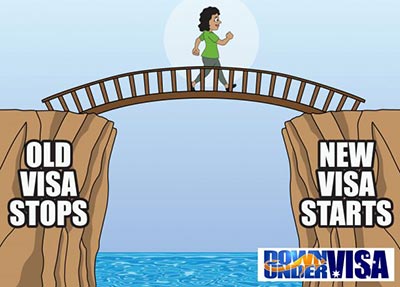
Let’s look at an example. Let’s say you have a Fiancée Visa and you just applied for a Subclass 820 temporary Partner Visa. However, your Fiancée Visa is about to expire. You will be given a Bridging Visa to allow you to stay in Australia while your 820 Partner Visa is being processed.
A word of caution, however. Please do not think you can get one of these because you’re not ready to get married or apply for a more appropriate visa. No. You would certainly be barking up the wrong tree if that is what you thought.
Bridging Visas - Common Types
There are three common bridging visas that we are going to examine.
Bridging Visa A (BVA)
This is almost certainly one of the most, if not the most common Australian Bridging Visa. As was hammered into you above, it is usually automatically granted to you when your prior visa expires while you are awaiting your previously applied for new visa. (As in the example above.)
A Bridging Visa A allows you to legally stay in Australia while your new visa is being processed. This visa will remain valid for the duration of your wait, even if it took years.
Note: There is no application form and no fee for a BVA.
It is important to remember that it more or less takes on the features of your previous visa. So, if your prior visa allowed you to work in Australia, then so would your BVA. If not, then the BVA will not allow you to either. An exception to this rule would be if you are applying for a Partner Visa. In this scenario, your BVA will allow you the right to work. YAY!
But don’t get too excited. You will not be allowed to leave the country while you are on a BVA. Should you do so, your BVA will be canceled and you will not be allowed back in the country. This is especially true if you are waiting for your onshore Partner Visa to come through.
Bridging Visa B (BVB)
Above, we said that you can not travel overseas on a BVA, right? Well, let us introduce you to the Bridging Visa B. This little baby is the answer to your travel fever blues. That’s right. If you can get your hot little hands on one of these, you will be free to hop on a plane and still return to Australia.
HOWEVER, you will need to apply for a BVB. Remember, all those “commonly” and “usually” and “normally” above? Well, this is why.
You will have to apply for a BVB while you are inside Australia. You can not apply for one of these offshore. This one also has a fee attached to it. Also, you MUST already possess a Bridging Visa A (BVA) before you can apply for a BVB. So, if you are a BVC holder (see below), then you can NOT apply for a BVB. Sorry.
Make sure you have your travel plans laid out and ready to go. You don’t actually have to have a ticket, but you better have a solid plan in place. They’ll want to see it. Why? Because these visas are issued with a specific travel period. You can not leave before then and you certainly can not return after the specified period.
Finally, your reason for leaving the country needs to be reasonable one. Visiting family, etc, this is normally quite acceptable, as are emergencies.
Bridging Visa C (BVC)
Like the BVB, Bridging Visa C (BVC) is very similar to BVA’s. However, they are like the evil stepmother. They are more restrictive.
So, why would you receive a BVC instead of a BVA? Well, if you are applying for an onshore visa, but your previous visa has already expired, they give you a BVC instead of a BVA. That’s right. See? Life has consequences.
BVC’s are more restrictive. We established that already. How, though? Well, like a BVA you are not allowed to leave Australia because you can not apply for a BVB while you are on a BVC. Also, BVC’s do not come with work rights. However, you may apply for them if you can prove a need to work.
Beyond those restrictions, BVC’s are similar to BVA’s.
De Facto Relationships

As with the term “bridging visa”, you’ve seen this term “de facto relationship” a little more than a few times. Certainly, you’ve seen it in this article. However, do you know what it means exactly? If so, good on you. If not, let’s examine it now.
For our purposes, a de facto relationship is an existing relationship that has been ongoing for more than twelve months. The way the Australian government sees it, if you’ve been playing-house for over a year then that’s the basics. You also need to show that you are definitely in a committed relationship and you are ready to take that next step.
And if you are in a de facto relationship, you may apply for a partner visa (onshore partner visa or offshore partner visa based on being in a committed de facto relationship. You don’t necessarily need to be a married couple if you don’t want to be or can’t be.
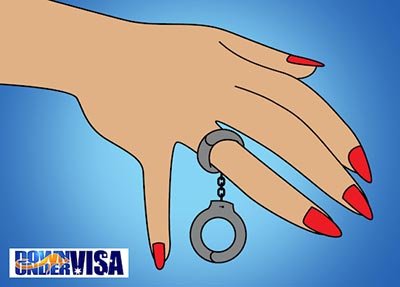
It does not mean:
- We have no relationship yet, but we want a visa to start one.
- We’re boyfriend and girlfriend and don’t want to be committed and want an easy escape-plan.
When we use the term, “playing-house” we don’t mean to downplay your relationship. We are also not trying to say that your time together has been anything less than serious. What we mean is that you and your Filipino partner have been living together, in a committed relationship, under the same roof.
Just living together and sharing a bed? Not enough. It’s about the commitment where you’ve decided that this is definitely the right person, but we’re not ready to marry because:
- We don’t believe in marriage.
- One (or both) of us is still legally married to someone else, and getting an annulment or divorce is complicated.
If you’re trying to play it safe? Think again! They need signs of true commitment to each other for now and forever.
Note: The Filipino term would be “live-in relationship”
A good way to think about a de facto relationship is that you are married without actually being married. So, you are not just sleeping together in the same house. No. It means you are in a monogamous and loving relationship where “us” and “we” are how you think of your relationship. Not “her and I” or “him and I”.
As we’ve stated above, the Australian government will accept a de facto relationship in lieu of a marriage certificate where all the signs of commitment and a shared-life are there.
And note that the 12 month period may be reduced if you are in a state of Australia (currently all but WA and NT) which allows Registered Relationships. That can cut the 12 months down to about 6 months.
Australian Citizenship
Becoming an Australian Citizen
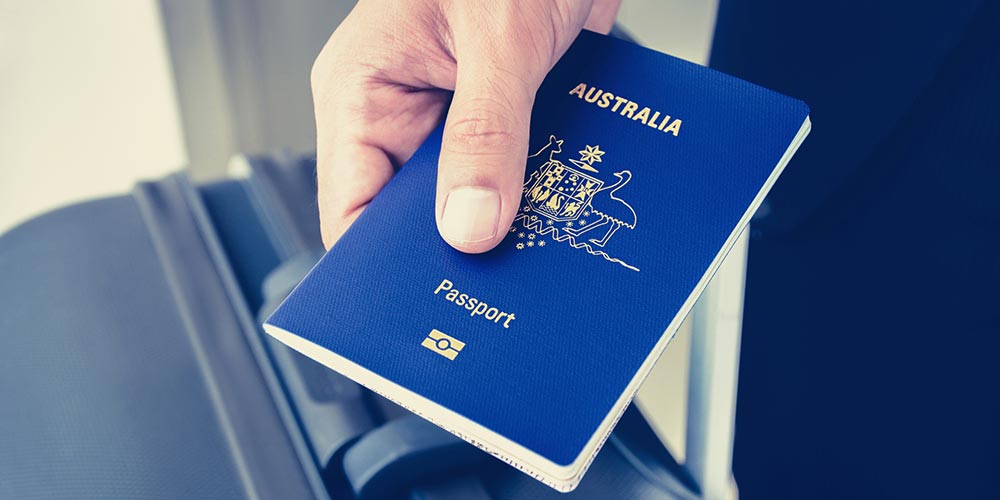
CONGRATULATIONS! You are now a permanent resident of Australia. So, what is next?
Well, for many Filipinas/Filipinos that would be obtaining Australian Citizenship.
We think it is important to remember that there are several pathways to becoming a citizen. However, keeping with the spirit of what we talked about so far, we are going to stick to those methods that apply to Filipinos who have come to Australia with their Aussie wives or husbands and have become permanent residents in Australia.
Eligibility Requirements to apply for Australian Citizenship
Permanent Visa
First and foremost, you must be a current permanent resident of Australia. In short, you must possess a visa such as a Permanent Partner Visa (subclasses 100 or 801). If you hold a temporary visa, then you are ineligible to apply for citizenship.
Residency
The residency requirement states that:
- You must have lived in Australia for the past four years.
- You just have spent one year of those four years as a permanent resident.
- You cannot have spent more than twelve months out of four years outside of Australia.
- You cannot have spent more than three months in the year as a permanent resident outside of Australia.
Example If you left Australia for 3 months in 2019, 5 months in 2018 and 3 months in 2017 and 2 months in 2016, then you are ineligible.
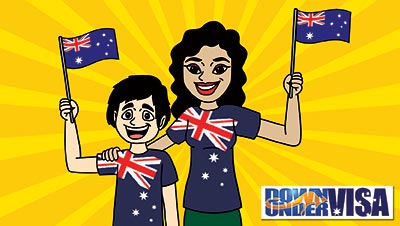
Finally, it is also worth noting that you must have been living in Australia legally. In other words, you must have a valid and up-to-date visa and not to have been unlawfully in Australia.
There are, of course, a few exemptions to the above requirements. If you have any questions about exemptions, we strongly recommend engaging an Australian Registered Migration Agent.
Character Requirement
Some of the things that will be examined are:
- Criminal convictions.
- Court obligations (in and out of Australia).
- Domestic violence or abuse reports.
- Associations with undesirables.
- Honesty with the Australia – e.g. were you truthful when applying for your visa(s) and/or citizenship.
Language Requirement
English is the official national language of Australia. As such, if you want to become a citizen, you have to show that you can communicate in and understand English.
You can prove your English ability in two ways. The first is by scoring a 75% or higher on the citizenship test. The second is through an interview with an immigration official. However, this second option is only if you secure an exemption for the citizenship test.
Show knowledge about Australia
Just like with the language requirement, you can prove that you know about Australia in two ways. You guessed it. The same two ways. By passing the citizenship test (75% or higher) or by interview.
Either way you will have to be able to show knowledge in three main areas.
The first area is knowledge of Australia (in general) and her people. This knowledge is best gained by living here and experiencing the people and culture.
The second area is knowledge about Australian law and government. Nobody expects you to become a law professor, but you should know the basics. The same goes for Australia’s government.
The third and final area is about Australia’s democratic principles and beliefs, liberties and rights.
An ongoing and close link to Australia
Simply put, you must show that you either intend to live in Australia or maintain a close and ongoing link or association to Australia if outside the country. In short, you can not expect to gain citizenship and then leave and never return. Becoming an Australian citizen requires a deep and continuing commitment to Australia.
Some great ways to prove your association are as follows:
- Do you have any children who are Australian citizens?
- Your wife or husband, who is an Australian citizen and the time you spent together.
- Do you have other family in Australia?
- Property – Perhaps you own a home or business in Australia.
- A financial link – job, bank account, you’ve paid Australian income tax.
Reasons for having your citizenship application denied
There are a few ways or reasons to have your application rejected. Some of them are pretty serious.
Identity
This one is a no-brainer. If you can not adequately prove you are who you say you are, then you will certainly be denied. Alternatively, if you mislead or outright lie about your identity and are discovered, your application will definitely be rejected.
Recent Former Citizen
If you were an Australian citizen and gave up your citizenship in the past twelve months, your application will not be approved.
National Security Risk
This is a pretty serious issue. If Australia determines that you are a risk to national security, then they will deny your application. You might be considered a national security risk based on your affiliations or friendships. For example, if you associated with known terrorists, then you might be deemed a security risk.
Criminal Record
Pending criminal charges or proceedings in Australia could derail your citizenship application. Like the national security risk, we think this one is pretty obvious.
Being in prison, recently served time in prison or are out on parole could certainly spell doom for your application. Being in a psychiatric institution, by court order is also going to be a problem.
Processing times
How long the process takes is very dynamic and can certainly be influenced by you. For example, did you complete your application correctly or did you submit it incomplete or missing documents? Something else that could delay your application is if you did not pay the correct fees or amounts. Don’t worry, though. In these situations, you will be notified so you can rectify that. Hopefully, your application will not be returned to you, but that is still a possibility. Also, make sure you show up for your citizenship test appointment. Skip that and it will definitely cause some problems and delays.
Travelling outside of Australia
If you have to leave Australia, during the application processing or while you wait for your citizenship ceremony, make sure you notify the proper authorities. Remember, that your application cannot be approved while you are outside the country. Also, you have to perform the Australian Citizenship Pledge within twelve months of having your application approved. Failure to do so may result in cancellation of your approval.
Also, keep in mind that you will be traveling on your Philippines passport with whatever Australian visa you currently possess. If there are travel restrictions on your visa, then that must be considered as well.
Application Approval or Rejection
Once a decision as been made, you will be notified in writing. If your application is approved you will receive, at a later date, an invitation for your citizenship ceremony. If your application is rejected, you will receive a letter of explanation. You can appeal this decision should you choose to do so.
Australian Passport and Elections
Congratulations! You are now an Australian citizen.
Once you receive evidence of your citizenship, you can apply for an Australian passport. It takes about three weeks to receive your new passport.
You will also be allowed to vote in Australian elections, but you must register to vote. In order to do so, you must be over the age of eighteen.
Australian Citizenship By Descent
Citizenship By Descent - For kids with an Aussie dad

If you are an Australian CItizen yourself and your child is born in Australia? Australian Citizenship by Birth. They come into the world an Aussie. But do you have kids born overseas? Did you and your Filipina sweetheart bring a wonderful bundle of joy into the world? Or maybe a few?
Those kids are entitled to Australian Citizenship By Descent (CBD). They can be declared as Aussie as you or me. This is their right, however it doesn’t happen automatically. You need to prove with certainty that this is definitely your child. And when the powers-that-be at the Australian Embassy in Manila are convinced of this, they will issue a grant of Australian Citizenship and they will be officially Australian.
Of course this means you need strong evidence to support your claim, which is more reason to get the support of a professional to manage the application for you. They will do everything they can to build the strongest possible case for you. Australian Citizenship By Descent means that the new Australian child can get an Australian passport and may enter and leave Australia freely, as well as all the other countries that allow Aussies visa-free access. No visas needed. No medical exams.
No restrictions on attending school in Australia and no paying overseas student fees. Can apply for Medicare. They will be treated just like every other Australian Citizen.
Biological Kids Only
I say this clearly, because the occasional knight-in-shining-armour comes about and claims a child as his own when he didn’t do the actual physical fathering. Understandable sentiment. You meet a Filipina single mother and she has a child, and you end up loving both of them.

You hear about the Filipino father abandoning the child, and you decide to do the gallant thing. And maybe someone suggests that you get your name on the birth certificate so that mum and child know they belong to you. It’s a wonderfully kind sentiment, but it’s illegal!
So don’t ever try to claim a child as your own biological child, especially in Philippines where they take lineage very seriously.
Advantages of Citizenship By Descent
Many!
First and foremost you are showing the child how much they matter to you. It’s a great gift of love from a father to child.
And it means you can avoid the visa process for the child. No one needs to declare your child as being worthy of a visa grant. You just need to establish that they have at least one parent who was an Australian CItizen themselves at the child’s birth. No, it’s not reciprocal sorry. A Filipino man becoming an Australian CItizen (Citizenship by Conferral) at the age of 40 cannot then declare his existing kids as Australians because he was still Filipino at the time of their birth.
And Citizenship is permanent. As long as there was no fraud in the application itself, once they are an Australian Citizen they are always an Australian Citizen. They may spend 20 years out of Australia, and may still return to Australia anytime they want.
And you find that a Citizenship By Descent application will cost you considerably less than adding them to a partner visa application too! Quicker, cheaper and a much better outcome. If the child is born of an Australian CItizen father why would you do anything else?
In Conclusion
We hope this helped you to better understand your Australian visa options. However, we cannot stress enough the importance of enlisting the services of a competent and reliable migration agent.
Please use our online visa assessment form, and let’s see if we can help you to make your dreams come true.


